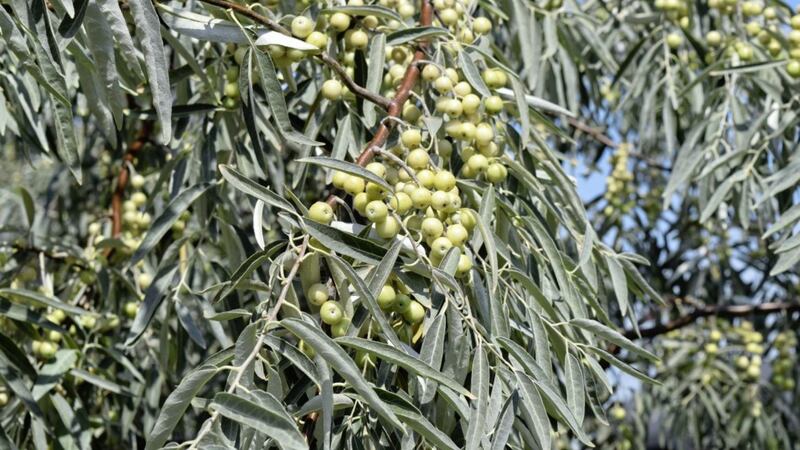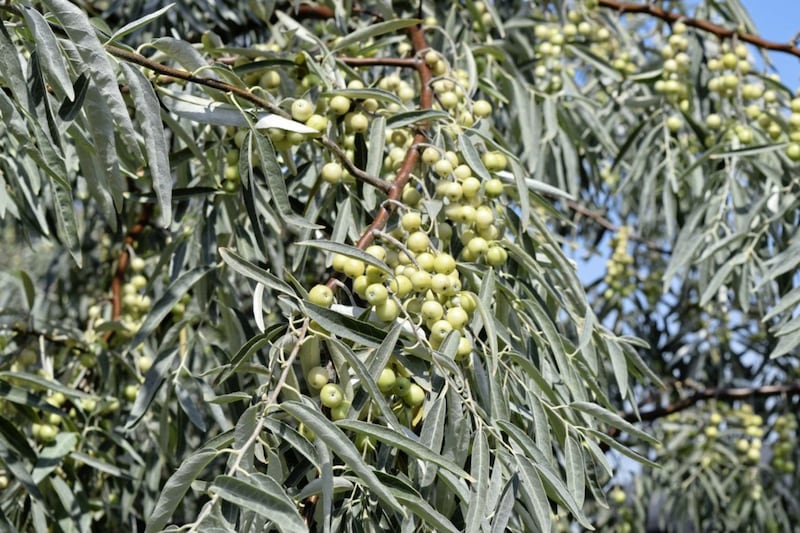I KNOW what you’re thinking – one week you're told to embrace shade, the next I’m saying what an unproductive and unattractive place it can be. It differs, of course, according to the context – from a shady spot that's perfect for cooling off to a dull, dusty corner that never gets any direct sunlight.
There are few places, however, where some form of plant life won’t grow, given a little assistance. That north-facing yard where you stash the bins may not end up brimming with flowers or producing a fine crop of tomatoes but a little greenery can transform a neglected area and give it some character. Choosing the right plant for the right place is crucial, though, as not everything will grow under such adverse conditions.
The Elaeagnus family of shrubs are an eye-catching, mostly evergreen, species that isn’t particularly fussy about where it grows.
There are dozens of species of flowering plants in the family Elaeagnaceae, the vast majority of which originate in Asia.
Many have naturalised in Europe and the North America, and in parts of the United States are considered invasive and have even been designated as noxious.
Elaeagnus x ebbingei cultivars are dense rounded, evergreen shrubs with elegant oval leaves. These plants have suitably glitzy names – ‘Gilt edge’ reaches a height and spread of four metres and produces attractive dark green leaves edged with gorgeous golden yellow margins. ‘Limelight’, with a height and spread of three metres, is a little smaller but no less striking. Its leaves are silvery when young and then become marked with yellow and green in the centres.
This shrub, which is actually a hybrid that came into being around a century ago, was awarded the Royal Horticultural Society's Award of Garden Merit (AGM), and has proved very popular due to its radiance, even in shade. When grown against a wall, the stems can be trained to climb and it also makes a good hedging plant.
For star true quality, Elaeagnus pungens ‘Maculata’ is highly recommended. Its upward spreading growth and glossy dark green leaves with rich yellow centres make ‘Maculata’ ideal as a specimen shrub. Also known as 'Aureovariegata', it is another RHS AGM winner and is regarded as the most reliable variegated Elaeagnus. A vigorous plant hailing from the Far East, 'Maculata’ is adaptable and tolerant of most soils. It can also handle salty coastal winds.
Elaeagnus commutata, commonly known as silver berry, is a thicket-forming shrub with long elliptic leaves completely covered by silvery scales which also produces fruit.
As mentioned above, when it comes to where they can live, Elaeagnus are much less picky than your average shrub. They will grow well in any fertile, well-drained soil, doing best in a sunny position – though thankfully for our purposes, the evergreen varieties can cope with some shade.
Along with stellar quality, elegance and style, these plants are a practical choice too. They are suitable in a number of garden situations including as a specimen plant or in a shrub border while some of the evergreen varieties are even suitable to grow as a hedge.
Plus there’s more to Elaeagnus than stunning foliage. Many produce exquisite little star-shaped flowers which can be fragrant, (depending on variety). ‘Maculata’ produces pendent silvery white flowers in autumn. ‘Quicksilver’, a deciduous variety, puts on a pretty show of yellow flowers produced from silver buds which look great against its lance-shaped silvery leaves.
Perhaps the only problem is choosing the most suitable variety from this quite extensive family.




